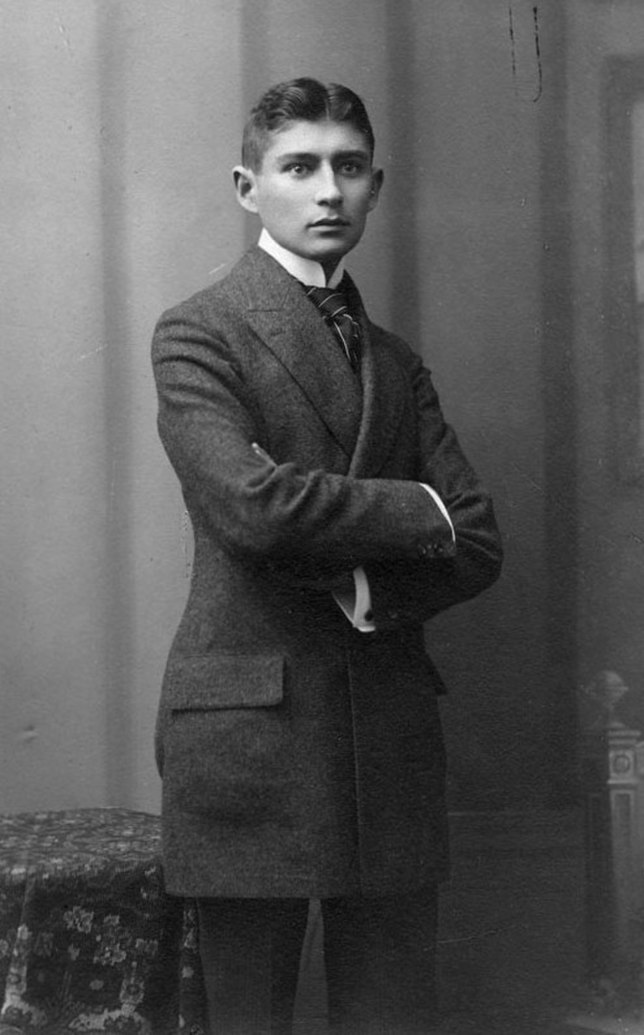Act 1
Get pupils to read this letter:Dear ___________,
I'm so sorry to hear that life is getting you down at the moment. Goodness knows, it can be so tough when nothing seems to fit and little seems to be fulfilling. I'm not sure there's any specific advice I can give that will help bring life back its savour. Although they mean well, it's sometimes quite galling to be reminded how much people love you when you don't love yourself that much. I've found that it's of some help to think of one's moods and feelings about the world as being similar to weather:Tell them that it was written by one of the following people:
Here are some obvious things about the weather:
It's real.
You can't change it by wishing it away.
If it's dark and rainy it really is dark and rainy and you can't alter it.
It might be dark and rainy for two weeks in a row.
BUT
It will be sunny one day.
It isn't under one's control as to when the sun comes out, but come out it will.
One day.
It really is the same with one's moods, I think. The wrong approach is to believe that they are illusions. They are real. Depression, anxiety, listlessness - these are as real as the weather - AND EQUALLY NOT UNDER ONE'S CONTROL. Not one's fault.
BUT
They will pass: they really will.
In the same way that one has to accept the weather, so one has to accept how one feels about life sometimes. "Today's a crap day," is a perfectly realistic approach. It's all about finding a kind of mental umbrella. "Hey-ho, it's raining inside: it isn't my fault and there's nothing I can do about it, but sit it out. But the sun may well come out tomorrow and when it does, I shall take full advantage."
I don't know if any of that is of any use: it may not seem it, and if so, I'm sorry. I just thought I'd drop you a line to wish you well in your search to find a little more pleasure and purpose in life.
Very best wishes, ____________
 |
 |
 |
| J.K. Rowling | Lewis Carroll | Stephen Fry |
 |
 |
 |
| Russell Brand | Franz Kafka | Fyodor Dostoevsky |
They will talk about writing styles and uses of certain words and things they know about the lives of these authors (I've purposefully used people for whom it would be understandable that they would have written such a letter).
Act 2
We are going to try to use their writing styles to determine who wrote it. What sort of things could we measure about their writing styles? (Some) Possible answers:- How often they use certain words/punctuation marks (make sure the words chosen are common enough to be in other writings and not specific to the context).
- Average sentence length.
- Average paragraph length.
- The Beadle and the Bard by J.K. Rowling
- The Life and Letters of Lewis Carroll
- The Fry Chronicles by Stephen Fry
- My Booky Wooky by Russell Brand
- Letter to my Father by Franz Kafka
- Notes from the Underground by Fyodor Dostoevsky
Act 3
Write a table of the techniques each group used and the conclusion they made from it. Decide as a group who we think it is. By this point my students were desperate to know who wrote it. Talking points:- Accuracy and how we could have obtained better estimates.
- Which techniques should hold most weight? Why?
- Why is "The Beadle and the Bard" probably not as useful to use as "The Fry Chronicles"?
- Where might this technique be used outside the classroom?
After this you might also want to show how historians have used this exact same technique (and its name: Stylometry)!
Final Notes: When I used this in class, with student written essays rather than a famous letter, it worked exceptionally well. As I said, pupils were desperate to know who wrote the essay by the end. It fell down a little at the end as I didn't have a good way to show the answer. Making it about celebrities (I think) makes the answer more interesting.
The reason I tweeted Fry and Rowling was to try to get a school essay from them (the story would be that I have an old school essay from a celebrity and I could sell it if only I could remember which of these people had written it). This letter works well and is a great and interesting bit of writing in itself. The only problem I have with it is that students could quite easily Google part of the text and get the answer.
What about you? How could you improve it?

No comments:
Post a Comment